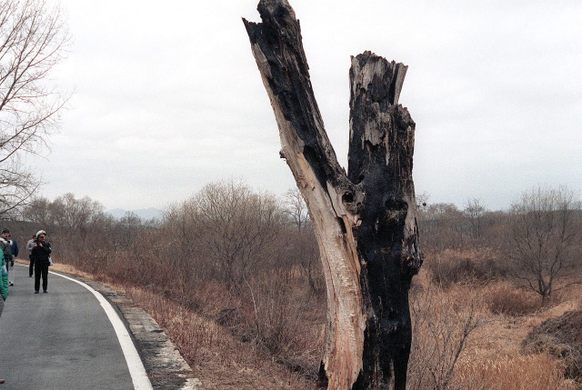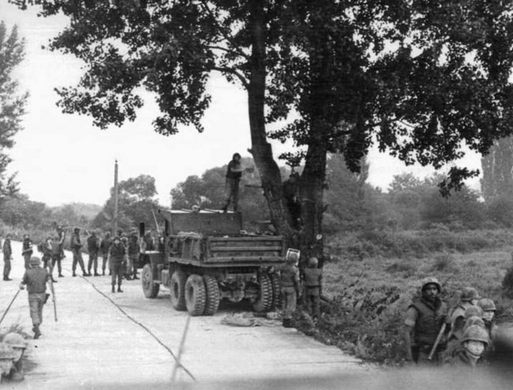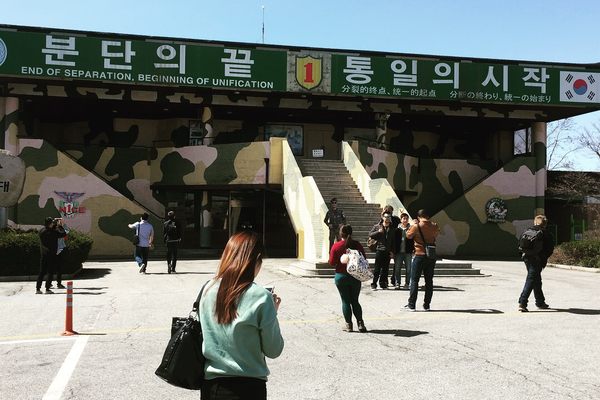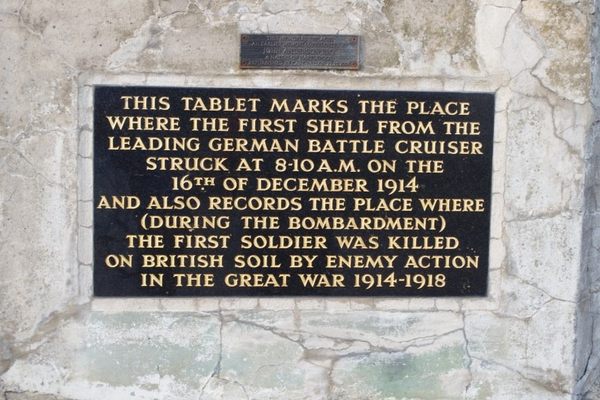Korean Axe Murder Incident Memorial
A monument to the two U.S. officers killed by North Korean troops while trying to trim a poplar tree.
On August 18, 1976, two U.S. Army officers entered the Korean Demilitarized Zone to trim a poplar tree that was blocking the view of United Nations observers. When they were confronted by a group of North Korean soldiers, the situation quickly escalated, with tragic results.
Captain Arthur Bonifas and First Lieutenant Mark Barrett had entered the Joint Security Area in the DMZ accompanied by Captain Kim of the South Korean Army, five Korean Service Corps (KSC) personnel, and 11 other men. Due to Joint Security Area regulations, not all the men were armed, but the KSC workers were carrying axes for pruning the branches of the poplar tree.
Shortly after the workers began trimming the tree, a group of 15 North Korean soldiers appeared. In command of the group was Senior Lieutenant Pak Chul, a man the UNC soldiers referred to as Lt. Bulldog due to the numerous confrontations they’d had with him in the past.
The North Koreans watched the men work for about 15 minutes, but then Pak decided to get involved. He aggressively told the UNC to stop pruning the tree, claiming, somewhat spuriously, that Kim Il Sung, the first Supreme Leader of North Korea, had planted the poplar himself, and personally supervised its growth. Captain Bonifas ignored Pak, turning his back on him and telling his detail to carry on.
Pak sent a runner back over the nearby Bridge of No Return, which spanned the Military Demarcation Line between North and South Korea. Within minutes, a guard truck rumbled over the bridge, carrying about 20 more North Korean soldiers, all carrying crowbars and clubs. Pak once again ordered Bonifas to stop the pruning, and Bonifas once again turned his back on the bullish North Korean.
According to a report by the U.S. Army War College written the year after the incident, Pak then proceeded to carefully take off his wristwatch, which he folded in a handkerchief and placed in his pocket. He then gave a simple order, in Korean: “Kill the bastards.”
Pak’s men picked up the axes that had been dropped by the tree-trimmers, and attacked the two U.S. soldiers. Bonifas was beaten to death by at least five North Koreans. Barrett ran into a tree-filled depression, but was cornered and then hacked to death by a succession of axe-wielding North Koreans. The attack, which was over in minutes, was captured on video and in photographs taken by UNC guards from their observation posts.
The Korean axe murder incident led to Operation Paul Bunyan, which took place three days later. The operation, named after a giant lumberjack in American folklore, was a carefully considered show of force by the U.S. and South Korea, one calculated not to escalate into outright war. The target of the operation: the poplar tree.
On August 21, Task Force Vierra rolled into the Joint Security Area. The convoy of 23 American and South Korean vehicles stopped by the tree and felled it within 42 minutes. They were watched by at least 150 North Korean soldiers, who didn’t react.
The stump of the poor poplar tree was deliberately left standing as a reminder to the North Koreans. Then, in 1987, it was uprooted and replaced by a stone monument with a brass plate dedicated to the two soldiers who lost their lives.
Know Before You Go
Most DMZ tours these days do not include this memorial, due to its sensitive location inside the JSA. If seeing it up close is a priority for you, you'll want to contact a tour company that offers customized tours, and keep on top of potential JSA closures and security statuses.




















Follow us on Twitter to get the latest on the world's hidden wonders.
Like us on Facebook to get the latest on the world's hidden wonders.
Follow us on Twitter Like us on Facebook